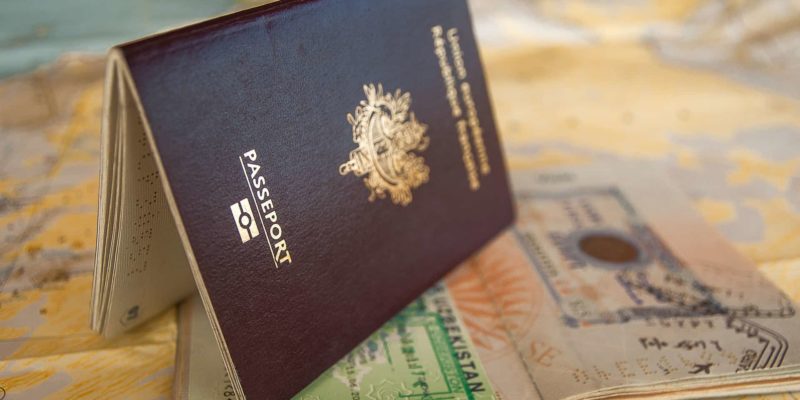Everything You Need To Know About Your Visa Sticker Before You Enter The Schengen Area
Has the Embassy approved your Visa? Are you seeking more information on how to read your Schengen Visa before travelling to Europe?
First of all, congratulations! We know how challenging the Schengen Visa application process can be.
Now it’s time for you to learn more about your Schengen Visa sticker.
However, you can read this post if you haven’t got your Visa yet. Understanding all the labels within your Visa sticker is critical for a successful trip to the Schengen Area.
Before anything else, you should know that a Schengen Visa is a sticker affixed to a passport’s blank page.
The sticker contains relevant information about you and your trip to the Schengen Area (e.g., your personal details, duration of stay, etc.)
Typically, Embassies provide Schengen Visa stickers in three languages: English, French, and the official language of the state that issued the Visa (e.g., Italian or Spanish).
Table of contents:
- Reasons why you should know how to read your Schengen Visa sticker
- How to read your Schengen Visa: Explanation of each label in the sticker
1. Reasons Why You Should Know How To Read Your Schengen Visa Sticker
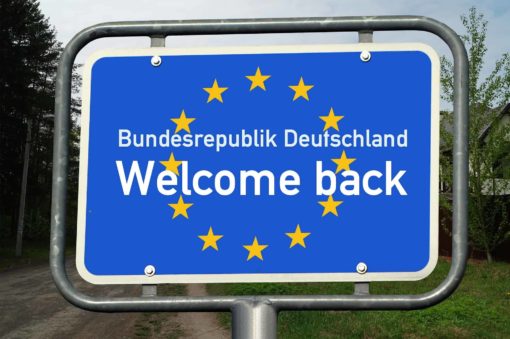
We always suggest successful Visa applicants read their Schengen Visa stickers with the utmost attention.
Below you will find the reasons why understanding each label within your Schengen Visa is essential:
- Ensuring that no mistake occurred while printing the Visa
Here is the story of a Visas Association community member who contacted us after being denied entry at a Schengen airport:
“I applied for my Schengen visa one month ago and asked for a visa starting from October 4rd to November 29th, as shown by my flight tickets and hotel reservations. I just found out my visa is valid from November 4rd to November 29th, exactly one month later! I didn’t realize it until I got rejected at the airport. What should I do?”
Sometimes, mistakes can occur while printing a Schengen Visa. To avoid being denied entry at the airport, you should carefully check it before travelling to Europe.
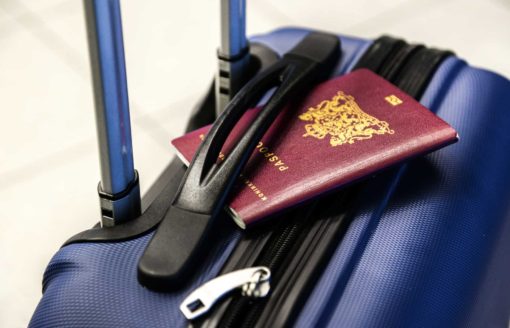
- Understanding your Schengen Visa duration of stay and validity period
Your Schengen Visa includes the number of days you will be spending in the Schengen Area and your Visa’s length of validity.
Understanding these two labels is critical for a successful trip to Europe. Otherwise, you risk breaking the 90/180-day rule and getting banned from entering the Schengen Area (because every Visa holder is permitted to spend up to three months in the Schengen Area over a 180-day period).
The “duration of stay” label includes the maximum number of days you are allowed to spend in the Schengen Area.
The Visa validity period refers to the dates from which you can use your Visa to stay in the Schengen Area.
To better understand the 90/180-day rule and the difference between the duration of stay and length of validity, you can check out this link.
2. How to read your Schengen Visa: Explanation of each label in the sticker
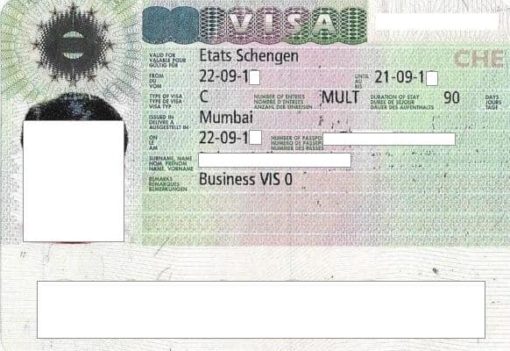
Below you will find information concerning each label on your Visa:
- Valid for/Valable pour (French)/Valido per (Italian)/Gültig für (German)/Válido para (Spanish), etc.
These phrases are set before the name of the territory you are allowed to enter. Most of the time, this label says “Schengen States” (in English or the official language of the Schengen country that issued the Visa. E.g., “Stati Schengen” in Italian, “Estados Schengen” in Spanish, “Etats Schengen” in French, etc.).
If your Schengen Visa contains the words “Schengen States”, it means that you can travel within all the 26 countries of the Schengen Zone.
In case your Visa only allows you to enter specific countries (typically, this rule is valid for Limited Territorial Schengen Visas – LTV), the label must contain the initials or acronyms of the countries that you are allowed to enter:
- A – Austria
- B – Belgium
- CH – Switzerland
- CZE – Czech Republic
- D – Germany
- DK – Denmark
- E – Spain
- EST – Estonia
- F – France
- FIN – Finland
- GR – Greece
- H – Hungary
- I – Italy
- IS – Iceland
- L – Luxembourg
- LT – Lithuania
- LVA – Latvia
- M – Malta
- N – Norway
- NL -– Netherlands
- P – Portugal
- PL – Poland
- S – Sweden
- SK – Slovakia
- SVN – Slovenia
Suppose the following initials and acronyms are on your Visa: LT, EST, N, and S. In that case, your Schengen Visa allows you to enter only Lithuania, Estonia, Norway, and Sweden.
Alternatively, your Schengen Visa may contain the following label: “Schengen States – (country initial or acronym)”. In that case, your Visa is valid for all Schengen countries outside of the country indicated after the dash.
For example, if your Visa reads “Schengen States – D”, it means you are allowed to enter all Schengen countries except Germany.
- From/Du (French)/Dal (Italian)/Vom (German)/Del (Spanish), etc.
This date shows the first day you are permitted to enter the Schengen Area.
- Until/ Au (French)/Al (Italian)/Bis (German), Al (Spanish), etc.
This date refers to the day by which you must leave the Schengen Area.
- Type of Visa/Type de Visa (French)/Tipo di Visto (Italian)/Art des Visums (German)/Tipo de Visado (Spanish), etc.
This label shows your Schengen Visa type, and it can include one of the following letters:
- A – Type A Schengen Visas are Airport or Transit Visas designated for travellers who must change flights at a Schengen airport. This Visa type does not allow you to leave the international airport zone.
- C – This is the most common type of Schengen Visa. The type C short-stay Schengen Visa allows you to spend up to 90 days in the Schengen Area within 180 days.
- D – The type D Schengen Visa is granted to applicants studying, working, or residing in the Schengen Area.
- Duration of Stay/Duree de Sejour (French)/Durata del Soggiorno (Italian)/Dauer des Aufenthalts (German)/Duración de la Estancia (Spanish), etc.
The “duration of stay” refers to the number of days you are allowed to spend in the Schengen Area.
- Number of Entries/Nombre d’Entrees (French)/Numero di Ingressi (Italian)/Anzahl der Einreisen (German)/Número de Entradas (Spanish), etc.
This label shows how many times you are allowed to enter the Schengen Area using the same Visa:
- 01 – “01” stands for a single-entry Visa, meaning you can enter the Schengen Area only once.
- 02 – “02” stands for double-entry Visa, meaning you can enter the Schengen Area twice using the same Visa.
- MULT – “MULT” stands for multiple-entry Visa, meaning you can enter the Schengen Area as many times as you want using the same Visa, as long as you don’t break the 90/180 rule.
- Issued in/Delivre a (French)/Rilasciato a (Italian)/Ausgestellt in (German)/Expedido en (Spanish), etc.
The “Issued in” label indicates the name of the city where the Visa was issued.
- On/Le (French)/Il (Italian)/Am (German)/El (Spanish), etc.
This label indicates the date when the Visa was issued.
- Number of Passport/Numero de Passeport (French)/Numero del Passaporto (Italian)/Nummer des Reisepasses (German)/Número de pasaporte (Spanish), etc.
Here is where you can find your passport number (the passport where the Visa officers have placed the Visa).
- Surname, Name/Nom, Prenom (French)/Cognome, Nome (Italian)/Name, Vorname (German)/Apellido, Nombre (Spanish), etc.
This label shows your full name, as mentioned on your passport.
- Remarks/Remarques (French)/Annotazioni (Italian)/Anmerkungen (German)/Observaciones (Spanish), etc.
According to your travel purpose, this label shows your Visa type. For example, “Tourism” or “Family visit”.
Finally, you will also find the Machine Readable Zone (MRZ) that encloses your data at your Visa sticker’s bottom.
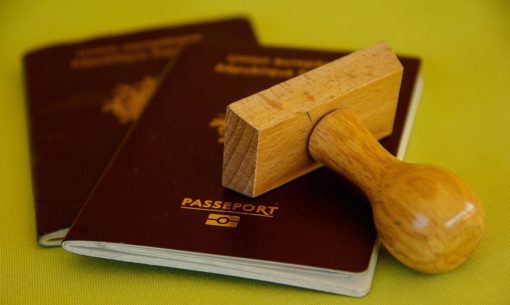
Hopefully, this post has helped you have a better understanding of your Schengen Visa sticker.
If you have any further questions concerning your Visa sticker, do not hesitate to contact us.
In case you still need to apply for a Schengen Visa, we would be more than glad to provide you with a free Schengen Visa consultation and guide you through your application process.
